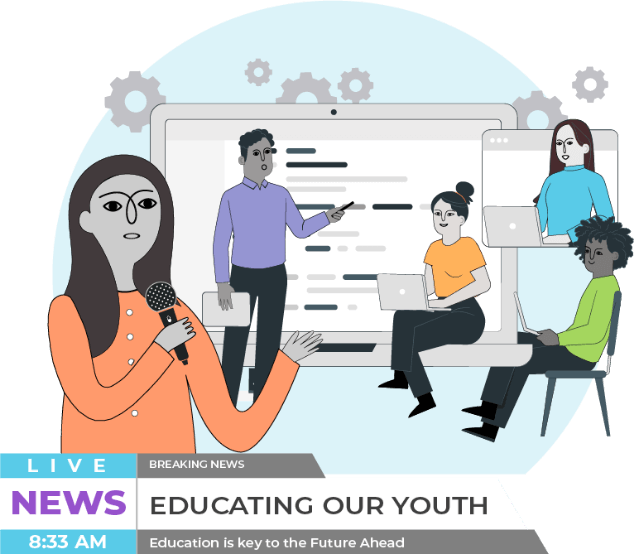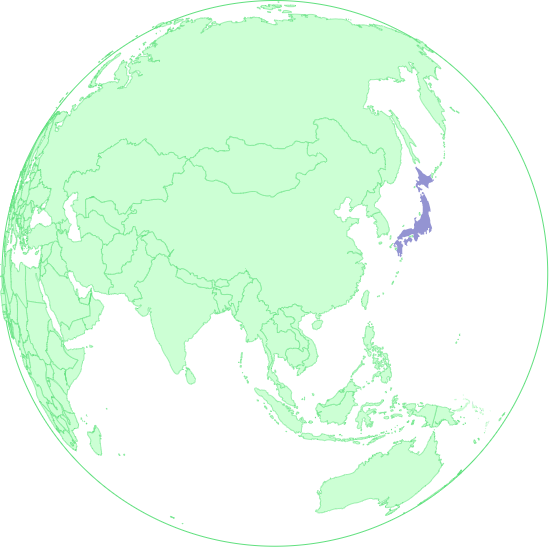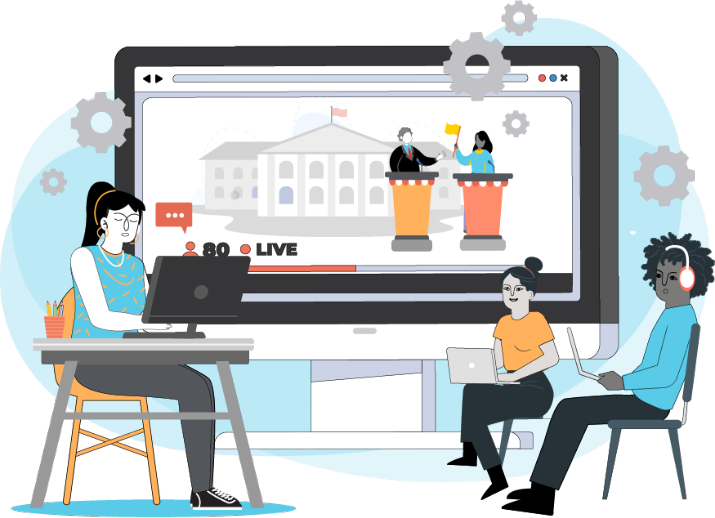
Traditional approaches to youth development are often designed and implemented using narrowly defined objectives and outcomes. Improving youth development outcomes across sectors and addressing systemic inequality and exclusion requires working beyond silos to understand and respond to increasingly complex democratic challenges.
A Note on Working in the Education Sector
Collaborating with student committees and clubs, as well as engaging in curriculum development, can be helpful to instill democratic and human rights-based values in young people. If you are interested in engaging with the education sector, it is important to start establishing partnerships with the appropriate people, such as the Ministry of Education, ahead of a program’s kickoff to gain access to schools and pupils.
Young people reported that, in some contexts, there is an ambiguous process for engagement with key stakeholders in the education sector that can be navigated by forming trusting, information-sharing relationships. Additionally, those key stakeholders may have differing political ideologies or interests that can be a barrier to your ability to work with schools. In this case, a tactic that has proven successful is to demonstrate the value of engagement with young people in school settings. If all of these tactics prove unsuccessful, it may make sense to engage young people outside of the formal school system, while leveraging both formal and informal communication mechanisms to let students know about opportunities for learning about and participating in civic and political engagement outside of the classroom.

As participants in the CEPPS/IFES “Advocacy for Inclusive COVID-19 Response and Recovery” webinar series in the Pacific Islands, students draw on their diverse experiences and perspectives to influence and develop a policy platform around three priority areas: education, disability rights, and youth participation. Government officials, elected and community leaders, and prominent advocates from across sectors attended the virtual student-led events.

Consider Amplifying Your Message through Media
Media has a considerable influence on youth perceptions of politics and civil society, therefore leveraging media platforms in a strategic and intentional way can increase the impact of DRG programs. As noted in phase one of the Youth DRG CSI, sharing positive stories about the contribution of young people after the completion of programs in the media challenges negative perceptions, demonstrates the value of youth engagement, and establishes greater buy-in for follow-on initiatives. Moreover, the importance of traditional media, such as television and radio, can reach more diverse youth audiences. For example, radio continues to be an effective way to share messages with people in rural areas.
Practitioners should also make the best use of online platforms like Facebook, Twitter, Instagram, and Tik Tok, among other tools, which can be an important way to amplify DRG program messages. Additionally, social media has added benefits for amplifying the impact of programs, including, in some contexts, acting as a platform where young people can make their voices heard in an open and candid manner. The instantaneous nature of social media also allows people to participate in civic and political processes, including people who may face additional barriers to doing so in-person, such as young people with disabilities.
In order to equip young people with the skills to effectively engage on social media, training in successful tactics, such as digital storytelling through videos and photo campaigns, is a key component that should be considered to support DRG program implementation.


In Ukraine, CEPPS/IRI found that training and engaging young people with applicable skills such as video editing, messaging, and persuasion helped young people to advocate for Ukrainian citizens to participate in upcoming local elections.
In Nigeria, under the CEPPS/IFES program, KDI produced short videos around the “We Can Do Better” campaign on social media. One video highlighted societal barriers that discourage women’s political participation, promoted women’s participation in the electoral process, and encouraged viewers to turn away from violence against women in elections. The video was widely shared across social media and with electoral stakeholders. This and other informative social media messages deployed by KDI contributed to driving an effective peace education effort.








